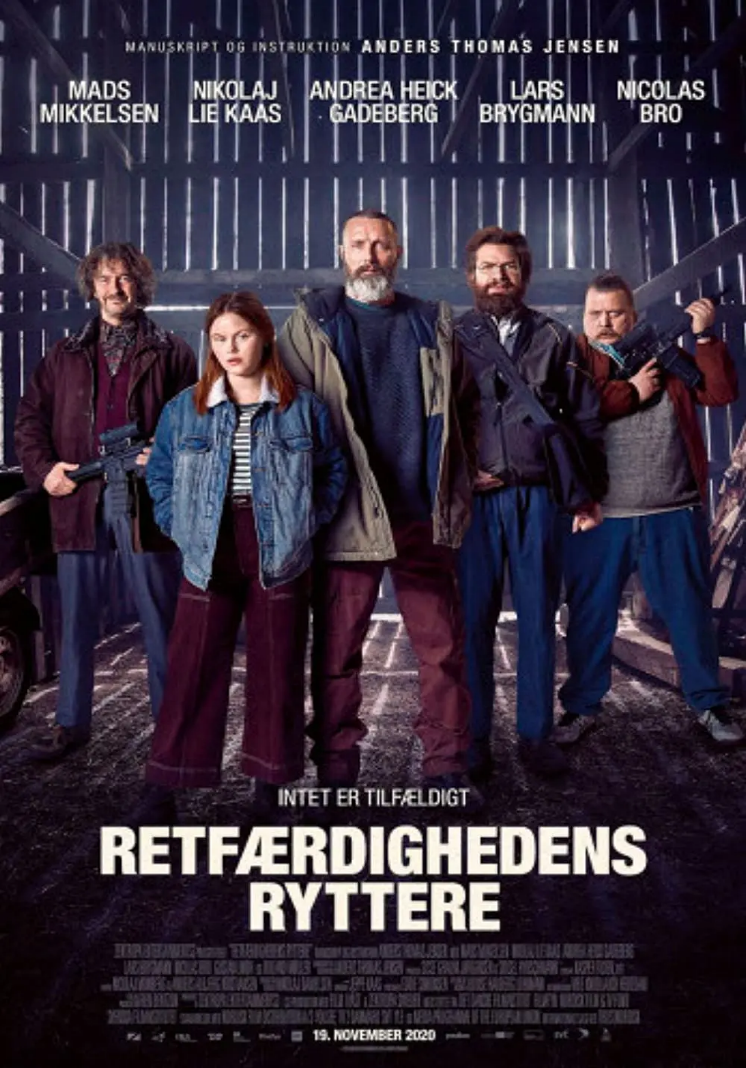Thelma

A kind of religious intertextual reversal the holy devil.A kind of religious intertextual reversal the holy devil.Her cage is perhaps not patriarchal. The so-called patriarchal power is in the film only a tool that is used helplessly and repeatedly blunted by weakness of heart. The evil begins with the wife, always hidden behind her father, not aware of what she has inflicted on her young daughter, remembering only with hatred what she has lost. Ultimately Thelma’s healing for her is forgiveness and cross-examination.
“What if we put the most sacred and the most depraved together?” Thelma carefully uttered her self-invented expletive: “The holy devil (Jesus-Satan).” Anja looked on and laughed at her, asking her to say it louder. Looking back on the moment later, Thelma defines herself just right in the irreverence of the joke, only apprehensive and unaware of it. At first glance, the first half of the film seems to present the clichéd situation of growing up as a young girl: on one side, a strict and dictatorial father in the name of love, an immovable and ambiguous mother, the usual surveillance, the deprivation of independent perception, and on the other side, the colorful reality of the world, the sudden love at first sight, the uncontrollable anxiety and self-reproach. We may speculate that the young girl is morbidly tamed by her parents’ control, and her long-suppressed emotions are externalized into physical convulsions and physical effects around her, which will eventually break through the dominant parental authority and religious theology to find an outlet for release and dissolution with an assertiveness that the protagonist herself did not expect. In terms of the actual plot, even if the final intention may overlap, the previous plot progresses in the opposite direction. This is interesting, because we are almost in the same perspective as Thelma, who is inhibited by drugs and discipline, unaware of her past, and with evil and power lurking in her body, but ignorant of its boundaries. The seemingly stubborn male authority is proven to have never existed in the scene where the father lunges at the mother’s bedside, and for years he may have been merely a subordinate and extension of his wife’s will, with intellectual skills and a family mission, perhaps without opinion, but with a benevolent heart. This speculation also explains the indistinguishable look in the mother’s eyes when she looks at Thelma, who is picking up the pieces, after deliberately pushing the cup to the table and knocking it down. It is supported by the photo of mother and son still on the bed. Although the film does not focus much on the mother, but in retrospect, her every appearance is intriguing. The mother is the one who hurts her daughter because of her preference for her youngest son and initially awakens the “demon” in her. It is also the mother who always holds a grudge.
In the surreal tone of the film, various religious symbols are present throughout each of Thelma’s episodes or nightmares, with exhausting frequency and intensity. At the same time, countless details that have been arbitrarily set aside await explanation: why did Thelma as a child look at the fish under the ice and be rushed by her father? Why does the father aim his shotgun at his daughter’s head while hunting in the woods and then give up? Why is the mother disabled in her lower limbs? Why is the skin of the neck that the snake wraps around in its first appearance aging and sagging?
As the plot progresses, the same supernatural force makes the husband disappear and then receives “special care” of the grandmother, the premature death of the brother and other characters appear, the suspicious details are explained one by one, the girl’s inner “evil” gradually appear. At the climax of the film, when the girl she loves disappears, Thelma immediately realizes that she is at fault. But she is so good at the level of waking consciousness that even her father is convinced of this. So before telling the truth he says to his daughter: “This could hurt you. Thereafter, we are able to re-examine the redundancy of the symbols in the light of a more complete truth. They are precisely the right representation of the young girl’s inner fears. Her fears are never external, but are anchored in concrete imagery in the ideological education she receives from the outside world. These images are inculcated by the tutor, by the persuasion and intimidation of the parents, and are a side indication of the ease of access to traditional religious symbols in terms of inculcating consciousness and their diminished effectiveness in practice. We gradually understand that the initial uncomfortable authority is only the parents’ helplessness in the face of their daughter’s unknown power, a feigned calmness, a self-deception to leave everything in the past.
Thelma’s subconscious insecurities and anxieties have been weapons of irrational control since childhood, with destructive consequences when the idea is implemented. (Her name also happens to mean “will” in Greek.) Thelma’s father, a physician, could only discipline his daughter with overpowering drugs and harsh Christian laws, and tried to avoid the growth of her will by suppressing independent thought, believing that converting her to God was the last and most effective way out; the hospital in Oslo was glamorous and indifferent, inducing seizures in the examination room, allowing the patient to suffer while indifferently following the procedure, recording the phenomenon without being able to solve the problem at the root, and ruling out the possibility of After the possibility of epilepsy, she was hastily advised to seek psychiatric care.
After a final confession and prayer, the candle was abruptly extinguished, a clear sign that the girl’s inner forces could not be tamed. Thelma (or her own independent consciousness) is the tether of her own irrationality. The internal “demon” exists for the purpose of fighting external pressure, so the only way to release the irrational evil is to eliminate the external forces that have long been a chronic problem. The film sets up a number of contrasts, for example, the way the father uses to warn his daughter is to order her to hang her hand over a candle flame, to remember that this is the fire of hell; and the daughter’s inner “demon” to the father’s ultimate punishment is from the palm of the hand on fire, and the water and fire end of the desperate. Here one can’t help but think of “The Master and Marguerite” of Woland, who spares no effort to protect the good, but punishes their greed, hypocrisy and cowardice with the world’s own evil. When the ritual is completed, the demon is hidden, and the various religious symbols implicated in the temptation of guilt lose their meaning completely. Thelma spits out a black bird from her drowned mouth, a creature that has always appeared in flocks as a metaphor, hovering in the sky, bringing death and danger, but also showing a pure and innocent side, its red claws puffing and panting with its small chest slightly heaving. The red claws puff and puff along with the small chest slightly undulating, a moment later take off, instantly no trace. At the end of the film, the sky is not clear for a long time, and the dark woods have returned to peace. When all the symbols and metaphors fall away, you feel relieved.




